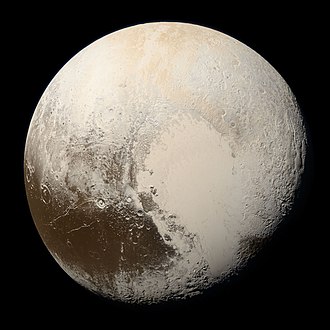Pluto
Gematria Values
Pluto (Hebrew: פְּלוּטוֹ, transliteration: *Pluto*; French: *Pluton*; German: *Pluto*; Spanish: *Plutón*) is a dwarf planet in the Kuiper belt, a ring of bodies beyond the orbit of Neptune. It was the first Kuiper belt object to be discovered and is the largest known dwarf planet in the Solar System. Pluto was discovered by Clyde Tombaugh in 1930 and was originally considered the ninth planet from the Sun. After 1992, its status as a planet was questioned following the discovery of several objects of similar size in the Kuiper belt. In 2005, Eris, a dwarf planet slightly more massive than Pluto, was discovered, which led the International Astronomical Union (IAU) to define the term "planet" formally in 2006. This definition excluded Pluto and reclassified it as a dwarf planet. Pluto has five known moons: Charon (the largest, with a diameter just over half that of Pluto), Styx, Nix, Kerberos, and Hydra. Pluto and Charon are sometimes considered a binary system because the barycenter of their orbits does not lie within either body.
Wikipedia Information
